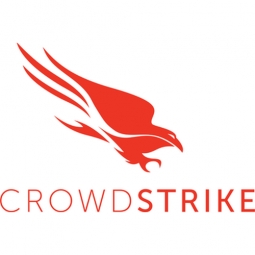公司规模
Large Corporate
地区
- Europe
国家
- United Kingdom
产品
- Falcon Complete managed detection and response
- Falcon Prevent next-generation antivirus
- Falcon Insight XDR endpoint detection and response
- Falcon Discover IT hygiene
- Falcon OverWatch managed threat hunting
技术栈
- CrowdStrike Falcon platform
- AWS virtual machines
实施规模
- Enterprise-wide Deployment
影响指标
- Customer Satisfaction
- Digital Expertise
技术
- 网络安全和隐私 - 云安全
- 网络安全和隐私 - 端点安全
适用行业
- 教育
适用功能
- 商业运营
用例
- 入侵检测系统
- 远程资产管理
服务
- 网络安全服务
- 系统集成
关于客户
The University of Westminster, established in 1838, is a prominent higher education institution located in London, England. It was the first polytechnic institution in London and one of the first in the U.K., founded to educate the city's working people. Today, the university enrolls over 19,000 students from 169 nations, offering many of them placements and work experience through partnerships with almost 200 organizations throughout the U.K. The university employs more than 2,000 people and is known for its diverse and inclusive environment. The institution offers a wide range of undergraduate and postgraduate programs across various disciplines, including arts, humanities, social sciences, and sciences. The University of Westminster is committed to providing high-quality education and fostering a supportive learning environment for its students. It has a strong focus on research and innovation, contributing to advancements in various fields. The university's location in the heart of London provides students with access to a vibrant cultural and professional landscape, enhancing their educational experience.
挑战
The University of Westminster faced significant cybersecurity challenges, including a high risk of ransomware attacks, lack of 24/7 threat detection and response, and a reactive security posture due to capacity constraints. The university's legacy antivirus software was insufficient to handle increasingly sophisticated cyber threats, leading to a high risk of attacks and potential reputational harm. The university's IT and security teams typically worked 9 a.m.-5 p.m. on weekdays, leaving a gap in security coverage after hours when most ransomware is deployed. Additionally, the expansion of IT facilities to support remote employees and students during the COVID-19 pandemic, combined with decreasing capacity and increasing workloads, resulted in a reactive security posture. The university also faced major security visibility gaps and blindspots, as its legacy security solutions couldn't provide unified visibility across a variety of operating systems. Implementing an in-house security operations center (SOC) was cost-prohibitive, and the additional staffing burden of a 24/7 security operation was not feasible.
解决方案
To address its cybersecurity challenges, the University of Westminster chose CrowdStrike Falcon Complete managed detection and response (MDR) to augment its in-house security team with responsive 24/7 coverage. This solution expanded visibility across all university systems and decreased the risk of cyber incidents and reputational harm. The university evaluated MDR solutions from two other security vendors but ultimately selected CrowdStrike due to the speed, scalability, and ease of deployment of Falcon Complete and the entire suite of tools the MDR team leverages across the CrowdStrike Falcon platform. The deployment was smooth and efficient, with the team installing the Falcon agent to more than 5,000 endpoints and 400 servers in four weeks. Prior to the university-wide deployment, security leaders opted to phase in the security software, first running a proof-of-value trial with about 200 devices and servers. The success of this pilot program eased any remaining concerns and secured the decision to proceed with the full deployment. The implementation of the lightweight Falcon sensor was quick and caused no performance issues, and the transition from legacy AV to CrowdStrike's next-gen AV was very smooth. The university now enjoys a detection response time of one hour versus the previous 24-hour response time, thanks to the 24/7 coverage of the Falcon Complete team.
运营影响
数量效益

Case Study missing?
Start adding your own!
Register with your work email and create a new case study profile for your business.
相关案例.

Case Study
Revolutionizing Medical Training in India: GSL Smart Lab and the LAP Mentor
The GSL SMART Lab, a collective effort of the GSL College of Medicine and the GSL College of Nursing and Health Science, was facing a challenge in providing superior training to healthcare professionals. As clinical medicine was becoming more focused on patient safety and quality of care, the need for medical simulation to bridge the educational gap between the classroom and the clinical environment was becoming increasingly apparent. Dr. Sandeep Ganni, the director of the GSL SMART Lab, envisioned a world-class surgical and medical training center where physicians and healthcare professionals could learn skills through simulation training. He was looking for different simulators for different specialties to provide both basic and advanced simulation training. For laparoscopic surgery, he was interested in a high fidelity simulator that could provide basic surgical and suturing skills training for international accreditation as well as specific hands-on training in complex laparoscopic procedures for practicing physicians in India.

Case Study
IoT platform Enables Safety Solutions for U.S. School Districts
Designed to alert drivers when schoolchildren are present, especially in low-visibility conditions, school-zone flasher signals are typically updated manually at each school. The switching is based on the school calendar and manually changed when an unexpected early dismissal occurs, as in the case of a weather-event altering the normal schedule. The process to reprogram the flashers requires a significant effort by school district personnel to implement due to the large number of warning flashers installed across an entire school district.

Case Study
Implementing Robotic Surgery Training Simulator for Enhanced Surgical Proficiency
Fundacio Puigvert, a leading European medical center specializing in Urology, Nephrology, and Andrology, faced a significant challenge in training its surgical residents. The institution recognized the need for a more standardized and comprehensive training curriculum, particularly in the area of robotic surgery. The challenge was underscored by two independent studies showing that less than 5% of residents in Italian and German residency programs could perform major or complex procedures by the end of their residency. The institution sought to establish a virtual reality simulation lab that would include endourological, laparoscopic, and robotic platforms. However, they needed a simulator that could replicate both the hardware and software of the robotic Da Vinci console used in the operating room, without being connected to the actual physical console. They also required a system that could provide both basic and advanced simulation training, and a metrics system to assess the proficiency of the trainees before they performed surgical procedures in the operating theater.

Case Study
Edinburgh Napier University streamlines long-distance learning with Cisco WebEX
• Geographically dispersed campus made in-person meetings costly and inconvenient.• Distance-learning programs in Malaysia, India, and China required dependable, user-friendly online tools to maximize interaction in collaborative workspaces.• Virtual learning environment required a separate sign-in process, resulting in a significant administrative burden for IT staff and limited adoption of collaboration technology.

Case Study
8x increased productivity with VKS
Before VKS, a teacher would spend a lot of time showing a group of 22 students how to build a set of stairs within a semester of 120 hours. Along with not leaving the teacher much time to provide one-on-one support for each student to properly learn carpentry, it also left a considerable amount of room for error. Key information would be misinterpreted or lost as the class was taught in the typical show-and-tell way.

Case Study
Scalable IoT Empowering GreenFlex's Sustainable Growth
GreenFlex, a company that supports sustainable development, decarbonization, and energy efficiency, faced several challenges in its quest to expand its business. The company needed to deploy a robust and sustainable IoT technology to support its growth. It was crucial for them to monitor and control devices at customer sites in a safe and reliable manner. They also needed to integrate devices across a range of communication protocols and gather and act on data to meet efficiency targets. GreenFlex had previously built IoT capabilities into its digital platform, GreenFlexIQ, to monitor and manage customer sites remotely. However, they soon realized that they needed a new platform to support their ambitions. They needed a platform that could scale to connect more devices for production management and make it easier for the operations team to manage devices in the field.







